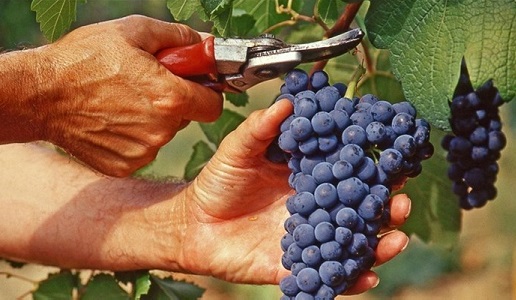2019 Harvest: final estimates by Assoenologi, Ismea and Uiv

Assoenologi, Ismea and Uiv present their production estimates for the harvest that has just ended: we are back in the production averages of recent years (harvest -19% over 2018) and the vintage is expected to be very good.
With the 2019 harvest we return to the production averages of recent years, with a quality that in many cases is excellent. This is a summary of the estimates provided by Assoenologi, Ismea and Uiv at the end of a harvest that began late compared to last year and lasted until the first days of November, which marked a total production of wine and must of 44.5 million hectoliters with a decrease of 19% compared to 54.8 million in 2018. The figure for November, therefore, recorded a further decrease of 3% compared to the first estimates for September.
In the peninsula there was a delay in the start of harvesting operations from 7 to 15 days compared to last year. All the Italian regions recorded a more or less marked decrease in production, with the exception of Tuscany which, on the other hand, recorded an increase of 10% compared to 2018. The first region to detach the grapes was Sicily in the first week of August, followed, at the turn of August, by Puglia and then Lombardy (Franciacorta) in the second decade of August. Between the end of August and the first week of September, in most Italian regions, harvesting operations were carried out for early varieties (chardonnay, pinot, sauvignon). The full harvest, throughout Italy, took place between the last ten days of September and the first ten days of October. The harvest ended between the end of October and the beginning of November with the delivery of the last bunches of Nebbiolo in Valtellina, of Cabernet in Alto Adige, of Aglianico del Taurasi in Campania and of the autochthonous vines on the slopes of Etna.
The delays in the harvest, however, played a positive and decisive role in the quality of the product harvested, having benefited, from north to south, a particularly dry climate, except with a few sporadic rainy days that did not affect the quality of the grapes. For almost the entire month of August, temperatures remained high, as did humidity, which favoured a luxuriant development of vegetation in the vineyards, managed with careful pruning of the greenery. In September and October, the particularly hot and dry climate made a further positive contribution to the ripening of the red grapes and, at the same time, led to a reduction in production due also to a lower grape/must yield.
In fact, in many areas, this situation allowed the grapes to be harvested in a perfect phytosanitary state, which favoured, especially in the northern regions, the concentration of aromas in white grapes. This series of climatic and meteorological variations, accompanied by skilful technical choices such as the identification of the correct phenolic ripeness, shows a very good wine year and, except for the areas affected by stormy phenomena of high intensity, there are already several cases of excellence that will have to be realized through careful work in the cellar.

 Italiano
Italiano













